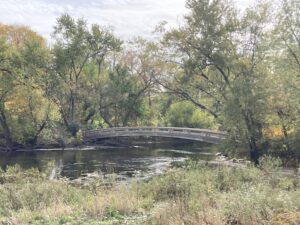 What is the Digital Divide? How does it relate to Digital Inclusion?
What is the Digital Divide? How does it relate to Digital Inclusion?
The digital divide refers to the barriers that prevent people from using the depth of resources available via the internet. Some have the equipment, training, and connectivity to be able to access the internet at high speed from home or wherever we are to the extent that we need/want to. Others lack one or more of these, or are restricted from access due to cost, availability, service provider restrictions, or the support necessary to overcome these barriers.
For a gentle introduction by example, see our short story page for a collection about digital inclusion.
Tech Goes Home has assembled a collection of myths, and the facts refuting them, including:
- Everyone has internet access
- Everyone has a computer
- Everyone knows how to use computers and the internet
The National Digital Inclusion Alliance, has developed definitions for basic terms like digital inclusion, digital equity, digital literacy, and broadband adoption. They also have developed a Digital Inclusion 101 presentation.
Pew Research has a fact sheet from April, 2021 on device ownership (mobile & other), and Digitunity has developed a data visualization tool, representing ACS data on device ownership broken down by state and county.
Idaho public libraries have put out a zine for training and engagement with two sides, one where participants identify the current state of digital inclusion at their organization, and the flip side asks them to imagine how their organization might address the 5 elements differently in the future.
Background on Broadband
- Benton Foundation’s “Everything about Broadband you were afraid to ask”
- NTIA videos
- EFF paper on fiber vs. cable
More Information
To learn more about digital inclusion, consider the following resources:
- As part of the 2020 NDIA webinar series, NDIA introduced “Digital Inclusion 101“.
- National Digital Inclusion Alliance has an awareness page, which has some useful resources
- Benton Foundation provides a free, reliable, and non-partisan daily digest that curates and distributes news related to universal broadband, connecting communications, democracy, and the public interest
- Blandin on Broadband provides information on broadband use, access, and trends especially in rural Minnesota
Related topics
- Right to Repair is an organization working to pass legislation that allows users and independent repair shops access to the information and the legal right to repair equipment they purchase.
